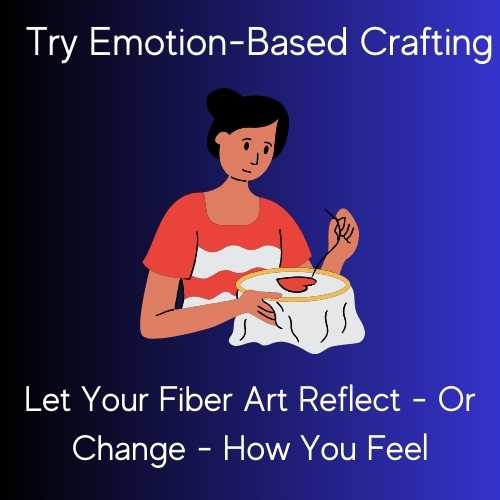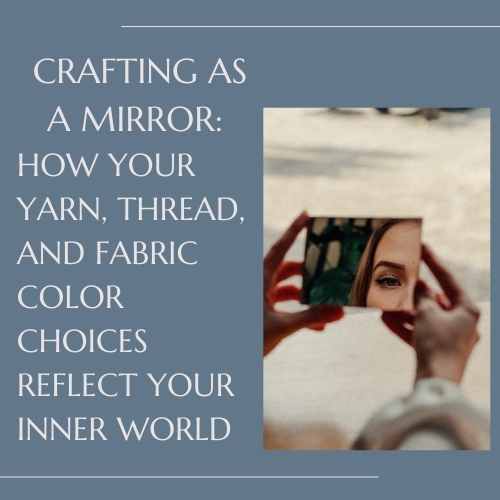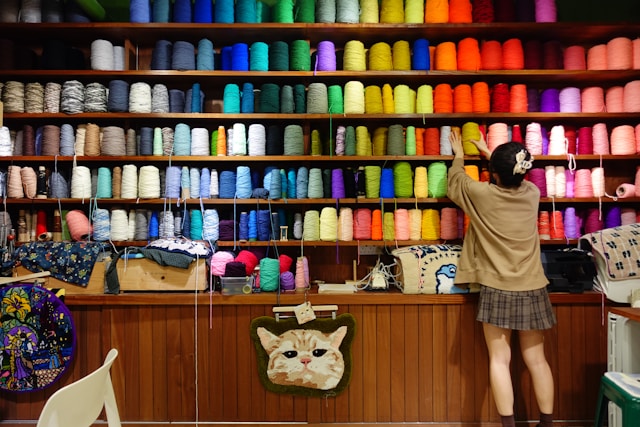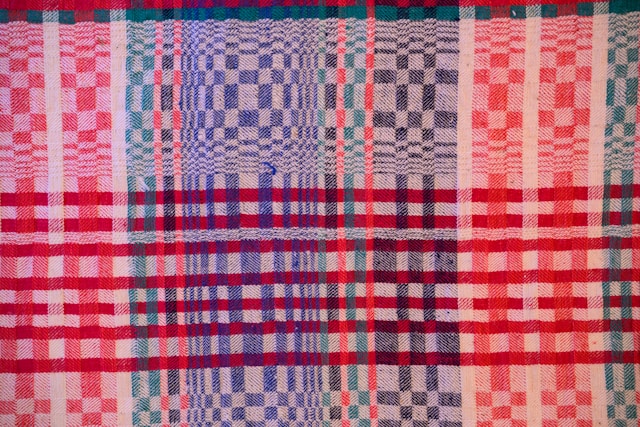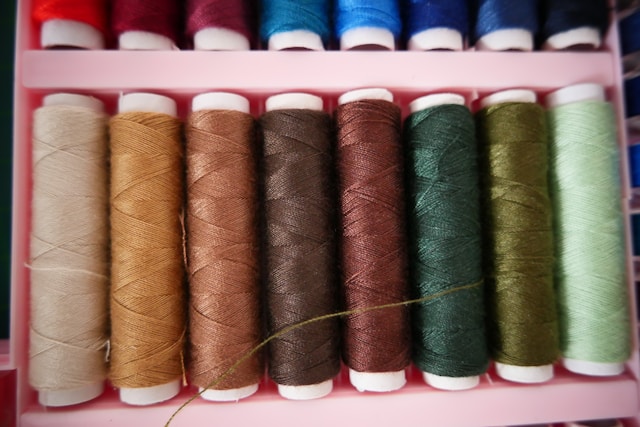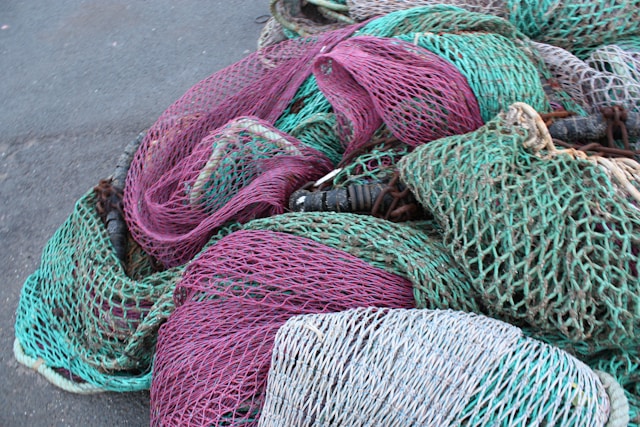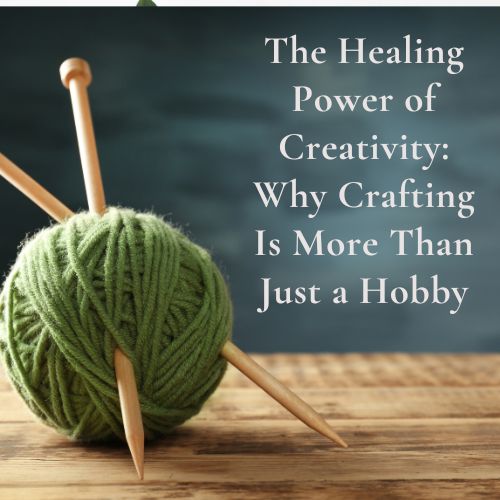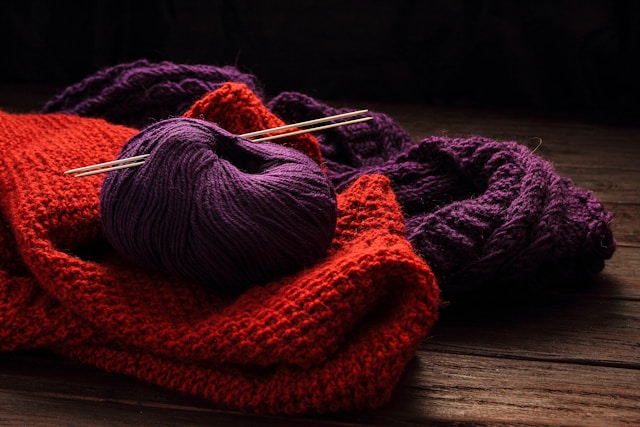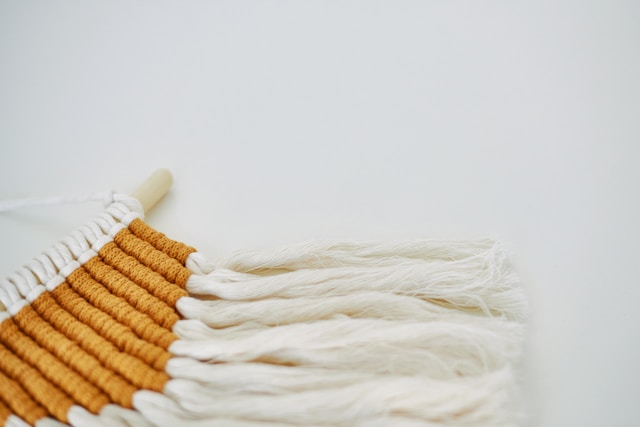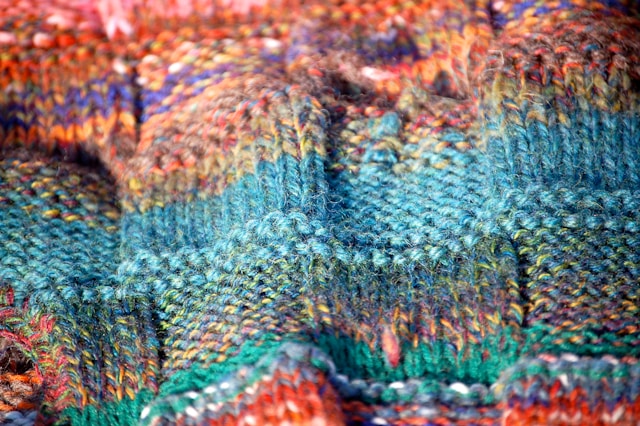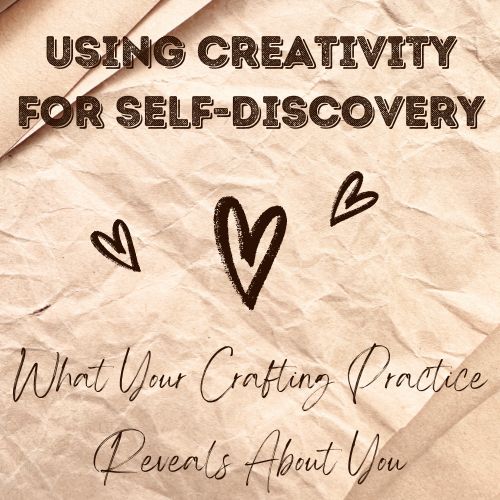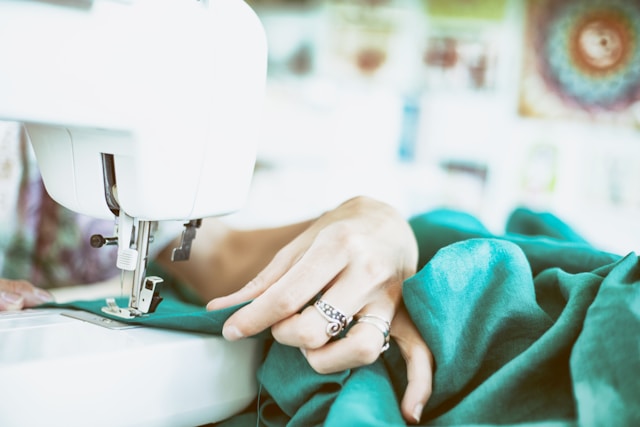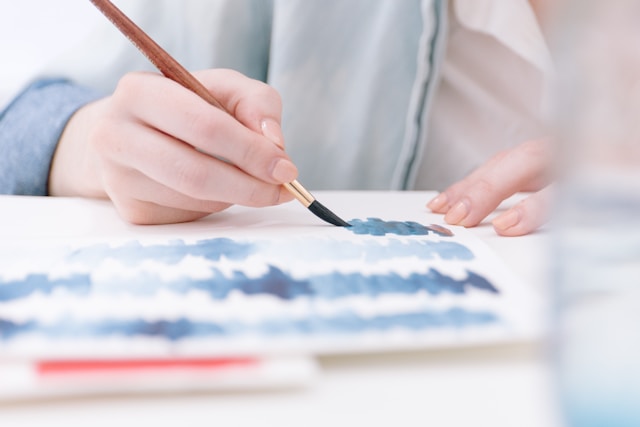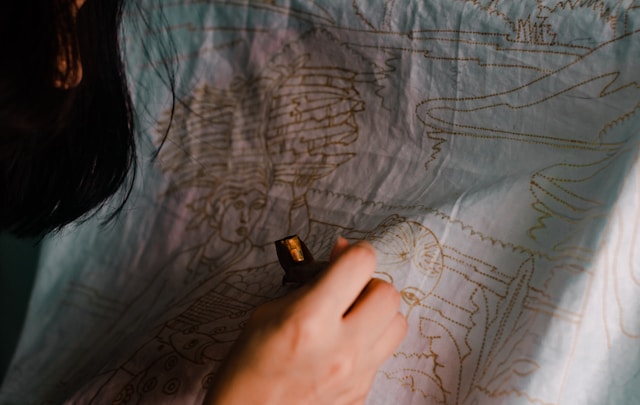Most of the time, we pick our crafting projects based on practicality—what we need to make, what’s in our stash, or what pattern we’ve been meaning to try. But what if, instead, we chose our projects based on how we feel?
Crafting isn’t just about making something tangible—it’s a form of self-expression, a tool for emotional regulation, and a way to process what’s happening inside us. Many fiber artists instinctively use their craft to relax, refocus, or work through emotions without even realizing it. But by bringing intentionality to the process, we can make our creative practice even more meaningful.
This is where Emotion-Based Crafting comes in. Instead of forcing yourself into a predetermined plan, let your emotions guide your creative choices—from color and texture to technique and pacing.
🧶 Want to learn more? Click here to join Craft to Heal.
Why Emotion-Based Crafting Works
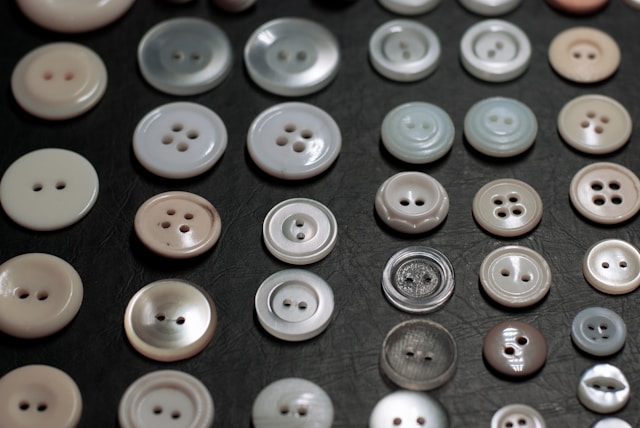
Our brains and bodies respond to sensory experiences, repetitive motion, and creative play—all of which fiber arts provide. Here’s how crafting can support emotional well-being:
✔ Texture and touch influence emotions. Soft fibers can be calming, while structured materials can feel grounding and stabilizing.
✔ Repetitive motion activates the parasympathetic nervous system. Knitting, crocheting, and hand-stitching can reduce stress and create a meditative rhythm that quiets the mind.
✔ Creative choice helps process emotions. Whether through color, pattern, or improvisational stitching, making something intuitively can help you understand and work through feelings you might not be able to put into words.
How to Choose a Project Based on Your Emotions
🧵 Feeling Overwhelmed? Soften Your Crafting Experience
When life feels too loud, too fast, or too heavy, grounding yourself in gentle, repetitive movements and soft materialscan create a sense of calm.
Try:
- Knitting or crocheting with soft, plush yarn like alpaca, cotton, or merino wool.
- Sewing simple, familiar stitches instead of complex, high-focus work.
- Working in soothing color palettes—soft pastels, neutrals, or muted tones.
🧶 Feeling Restless? Embrace Repetition & Motion
Restlessness—whether from anxiety, ADHD, or just a jittery day—can make it hard to sit still and focus. Repetitive motions can help channel that excess energy into something rhythmic and satisfying.
Try:
- A rhythmic, no-pressure pattern, like garter stitch knitting, a granny square, or simple chain-stitch embroidery.
- A high-motion project, such as hand-quilting or finger-crocheting.
- A stitching challenge, like speed-knitting rows or free-motion sewing to create an abstract design.
🪡 Feeling Emotionally Stuck? Improvise & Let Go of Control
If you’re struggling with creative blocks, emotional numbness, or feeling trapped in a routine, breaking free from structured patterns can be a powerful exercise in self-expression.
Try:
- Freeform crochet or knitting—stitch without counting, letting the shape emerge as you go.
- Improvisational embroidery—instead of following a pattern, let yourself stitch intuitively based on what feels right.
- Patchwork quilting without planning—piece together scraps based on instinct rather than symmetry.
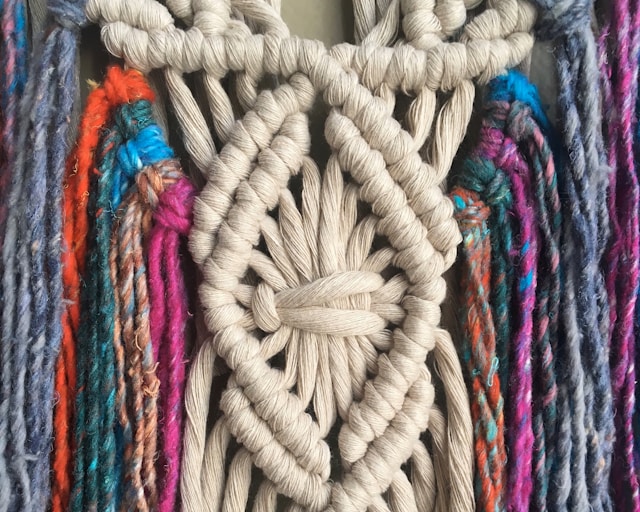
🧵 Feeling Anxious? Slow Down & Ground Yourself
Anxiety thrives in racing thoughts and mental clutter—fiber arts can be a way to bring yourself back to the present moment.
Try:
- A slow, mindful project, such as hand-stitching a simple design or knitting a textured square.
- Using grounding colors, like deep greens, soft blues, or warm neutrals.
- Pairing crafting with deep breathing—inhale for three stitches, exhale for three stitches.
🎨 Feeling Bold & Inspired? Play with Color & Experimentation
Creativity flows in cycles, and when you feel energized and expressive, your fiber arts practice can reflect that excitement.
Try:
- Colorwork projects—knit or crochet with vibrant, high-contrast colors.
- Abstract embroidery or appliqué—mix threads, patterns, or stitches freely.
- A high-risk, high-reward project, like trying a new technique or modifying a pattern to make it your own.
Emotion-Based Crafting And Mental Health
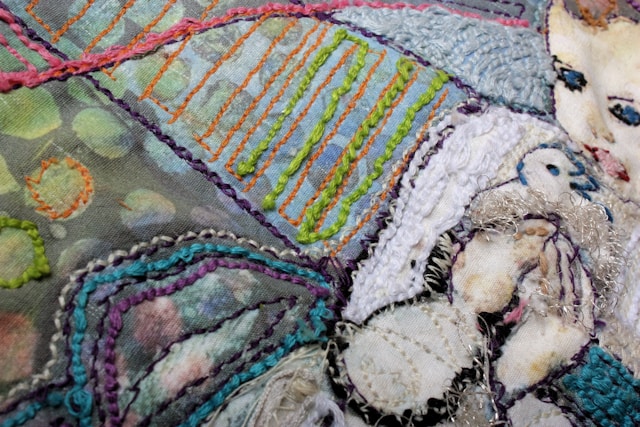
Crafting has long been used as a therapeutic tool to support mental health, and research backs up what many fiber artists intuitively know—working with yarn, thread, and fabric can help regulate emotions, ease stress, and create a sense of control in difficult times. While crafting isn’t a replacement for professional mental health care, it can be an accessible, effective tool in the larger self-care toolbox—one that works alongside therapy, medication, movement, and other forms of emotional support.
Below are some of the ways that fiber arts can be particularly helpful for anxiety, depression, and other mental health challenges—along with specific symptoms that crafting can help alleviate.
🌀 Crafting for Anxiety: Finding Calm in Repetition
Anxiety often comes with racing thoughts, a heightened nervous system, and an overwhelming sense of unease.Many people with anxiety experience:
- Excessive worry and overthinking
- Restlessness or jitteriness
- Difficulty focusing or feeling mentally scattered
- Tension in the body, like clenched jaws or tight shoulders
Crafting can help disrupt anxious thought loops and bring the nervous system back to a calmer state through:
✔ Repetitive motion – Knitting, crocheting, quilting, and embroidery all involve repeated hand movements, which activate the parasympathetic nervous system—your body’s natural relaxation response.
✔ A structured, predictable activity – When the world feels overwhelming, crafting offers a small, controlled environment where you can focus on something soothing and tangible.
✔ Sensory grounding – The feeling of yarn slipping through your fingers, the rhythmic pull of stitches, or the gentle weight of fabric can all serve as anchoring sensations that bring you back to the present moment.
✔ Mindful breathing – Pairing crafting with slow, intentional breaths (such as inhaling for three stitches and exhaling for three stitches) can further regulate the nervous system and reduce anxiety.
🌫️ Crafting for Depression: Creating a Sense of Purpose & Progress
Depression can drain energy, motivation, and even the ability to feel joy. Common symptoms include:
- Lack of motivation and difficulty starting tasks
- Feelings of worthlessness or self-doubt
- Fatigue and difficulty concentrating
- A sense of emotional numbness or detachment
Engaging in fiber arts can be a gentle but effective way to re-engage with creativity and daily life through:
✔ Small, manageable goals – Depression makes big tasks feel impossible, but crafting offers the ability to start small—just one stitch, one row, or one seam at a time.
✔ A built-in sense of progress – Unlike many daily responsibilities that feel never-ending, crafting creates a visible sense of accomplishment, helping counteract the feeling of stagnation that often comes with depression.
✔ Engagement with color and texture – Depression can dull sensory experiences, but choosing bright or comforting colors and working with tactile fibers like soft wool or smooth cotton can help gently reawaken those sensations.
✔ A non-verbal way to process emotions – When depression makes it hard to put feelings into words, crafting can be an alternative form of expression and self-reflection.
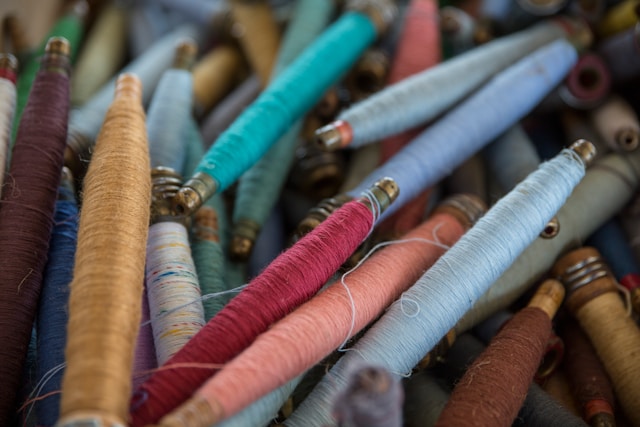
🌪️ Crafting for ADHD & Restlessness: Channeling Energy into Focused Creativity
People with ADHD or high-energy personalities often struggle with:
- Difficulty sitting still or maintaining focus
- Impulsivity and switching between projects quickly
- Feeling overwhelmed by too many choices
- Needing external stimulation to stay engaged
Crafting can be a great tool for channeling energy in a productive and calming way by offering:
✔ Repetitive motion with a built-in reward system – The predictable nature of stitches or patterns gives just enough structure to keep focus, while the visible progress keeps the brain engaged.
✔ Tactile stimulation to maintain focus – The feeling of yarn, the sound of needles clicking, or the rhythm of a sewing machine can serve as helpful sensory input that aids concentration.
✔ The ability to switch between projects – People with ADHD often thrive when they have multiple projects to cycle between, allowing them to work with their attention span rather than against it.
✔ A creative outlet for impulsivity – Freeform crochet, intuitive quilting, and experimental embroidery can allow for creative spontaneity without feeling restrictive.
🌍 Crafting as One Piece of the Mental Health Puzzle
While fiber arts can be a powerful tool for emotional well-being, it’s important to acknowledge that crafting alone isn’t a cure-all. Mental health is complex, and true healing often requires multiple forms of support—whether that’s therapy, medication, social connection, movement, or mindfulness practices.
However, what makes crafting unique is that it’s both creative and calming, giving people a way to engage in self-expression, stress relief, and sensory grounding all at once.
In Craft to Heal, we explore how to bring more intention to your fiber arts practice, helping you use it as a tool for self-reflection, emotional resilience, and creative growth. Whether you struggle with anxiety, perfectionism, creative blocks, or just want to feel more present while making, this series is designed to help you tap into the deeper benefits of the craft you already love.
There’s No “Right” Way to Craft—Only What Feels Right for You
Emotion-Based Crafting isn’t about getting the project “right”—it’s about letting your creativity become an extension of your emotions and a tool for self-care. Some days, you’ll crave comfort and predictability; other days, you’ll want challenge and change. Both are valid.
By tuning into what you need in the moment, you can transform your fiber arts practice into a deeply personal and healing experience.
Want to Explore Crafting for Emotional Well-Being?
Craft to Heal is a workshop series designed for fiber artists who want to go beyond technique and explore how fiber arts can support self-discovery, emotional resilience, and mindfulness.
🧶 Want to learn more? Click here to join Craft to Heal.
